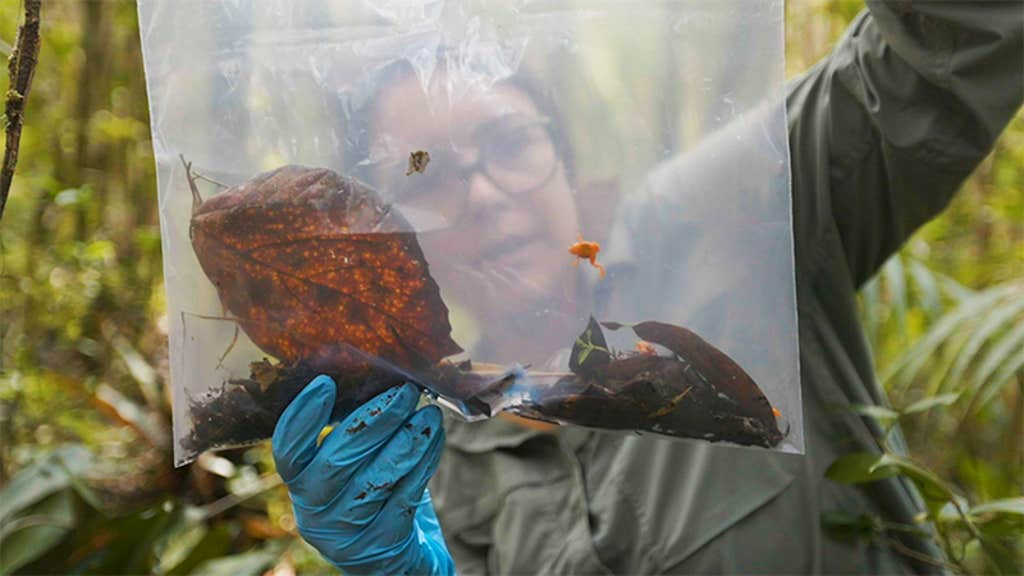Measuring just a few millimeters long, the pumpkin toadlet is diminutive in size but flamboyant in coloration. This tiny neon creature, which lives on Brazil’s southeast coast, has become a symbol of conservation and protection for the Atlantic Forest, a rainforest that sits just 50 kilometers from Brazil’s largest city, Sao Paulo.
Recently, a team of researchers from Brazil and the California Academy of Sciences traveled to Serra do Mar State Park, inside the Atlantic Forest, to begin marking, swabbing, and collecting DNA from a series of pumpkin toadlets. The researchers want to understand how the frogs cope with chytrid fungus, considered by some to be the most lethal wildlife pathogen in recorded history.
The water-borne fungus, which infects the skin of amphibians, has devastated many frog populations around the world in recent decades. According to some estimates, chytrid disease has led to extinctions in up to 90 amphibian species and declines in more than 500, wreaking havoc on entire ecosystems along the way.

Scientists and conservationists have struggled to understand what makes chytrid disease so lethal, and how to prevent its spread. One feature of the disease is that while it causes total mortality in some species or populations, it seems to cause only sporadic deaths in others.
Together the Brazilian and American scientists studying the pumpkin toadlet in the Atlantic Forest have identified individuals of the species that seem to be resistant to the fungus—they recover from it all on their own. They hope that learning more about these special little frogs and what allows them to hold out could help us protect frogs around the world against future outbreaks.
This story originally appeared in bioGraphic, an independent magazine about nature and regeneration powered by the California Academy of Sciences.
-
Katie Garrett
Posted on May 17, 2024
Katie Garrett is a producer of natural history films that combine intimate cinematography with personal stories from people living and working alongside nature. With a degree in biology and background in the arts sector, she is particularly passionate about amphibian conservation. She has produced videos for online platforms such as National Geographic and Science Friday, and her work has received accolades at festivals around the world, including winning Stories of Hope (Short Form) at the 2022 World Wildlife Day Film Showcase.
Get the Nautilus newsletter
Cutting-edge science, unraveled by the very brightest living thinkers.
Discover more from CaveNews Times
Subscribe to get the latest posts sent to your email.

























![Exploring the Serene Beauty of Nature: A Reflection on [YouTube video title]](https://cavemangardens.art/storage/2024/04/114803-exploring-the-serene-beauty-of-nature-a-reflection-on-youtube-video-title-360x180.jpg)


























